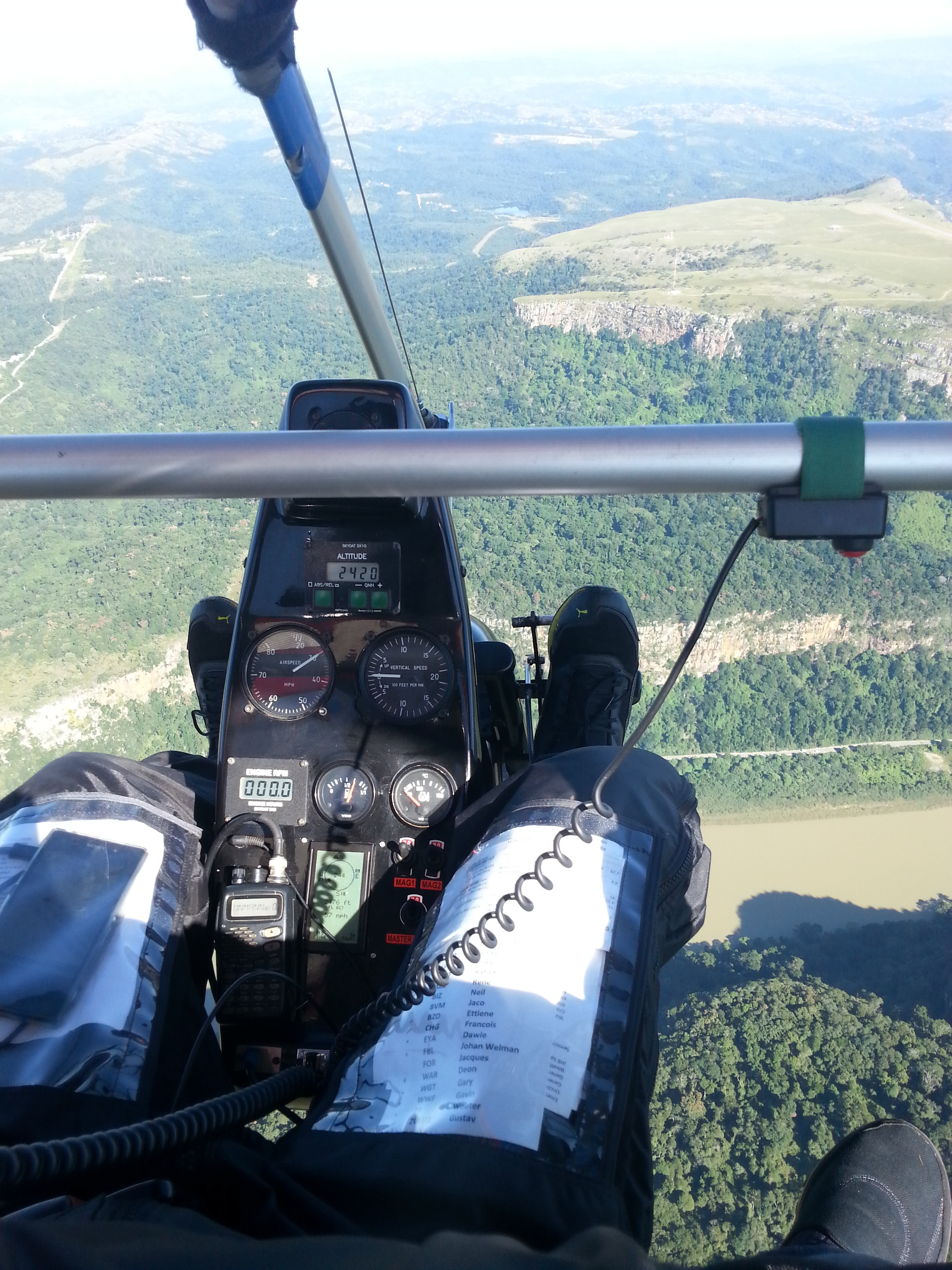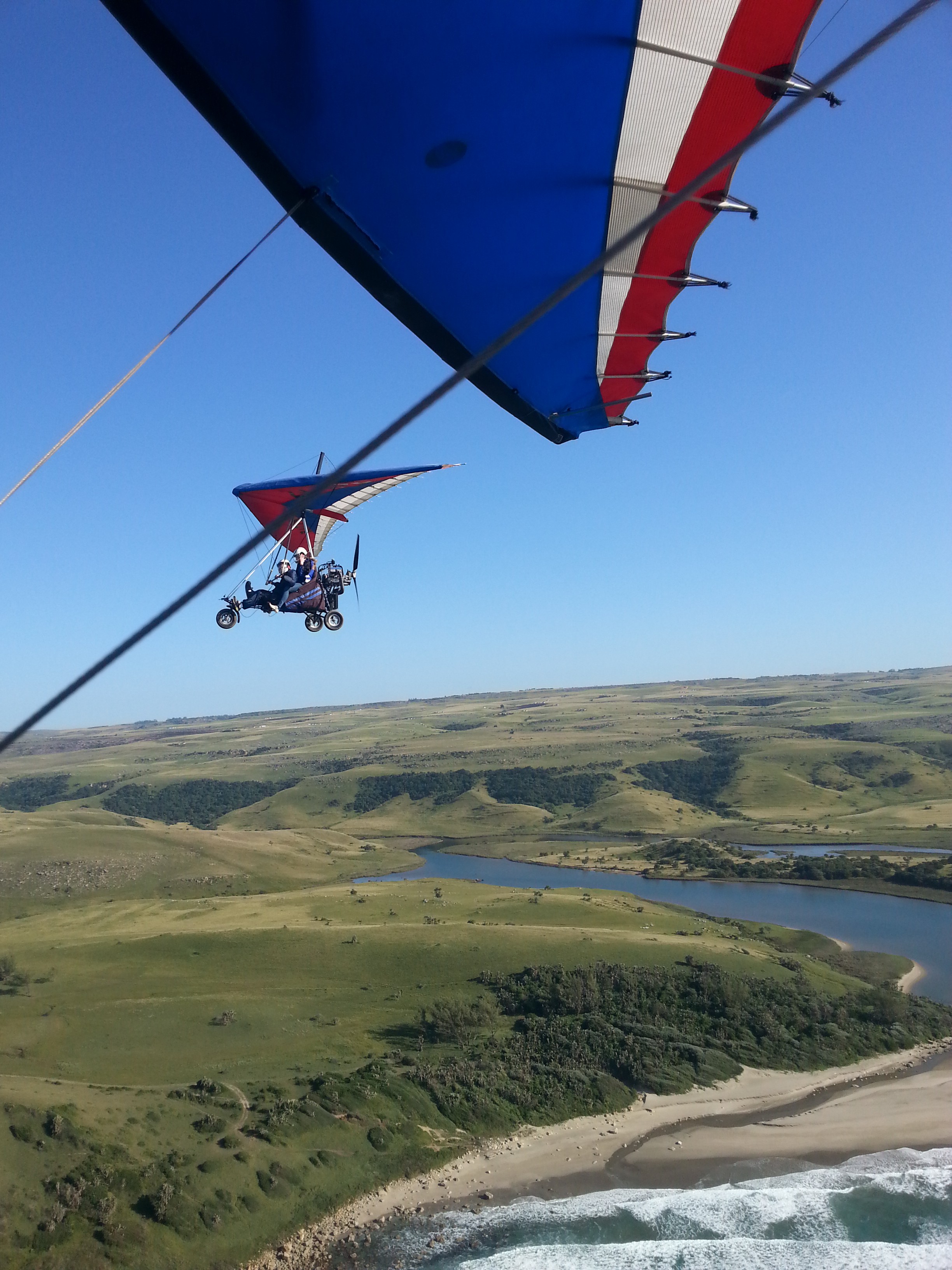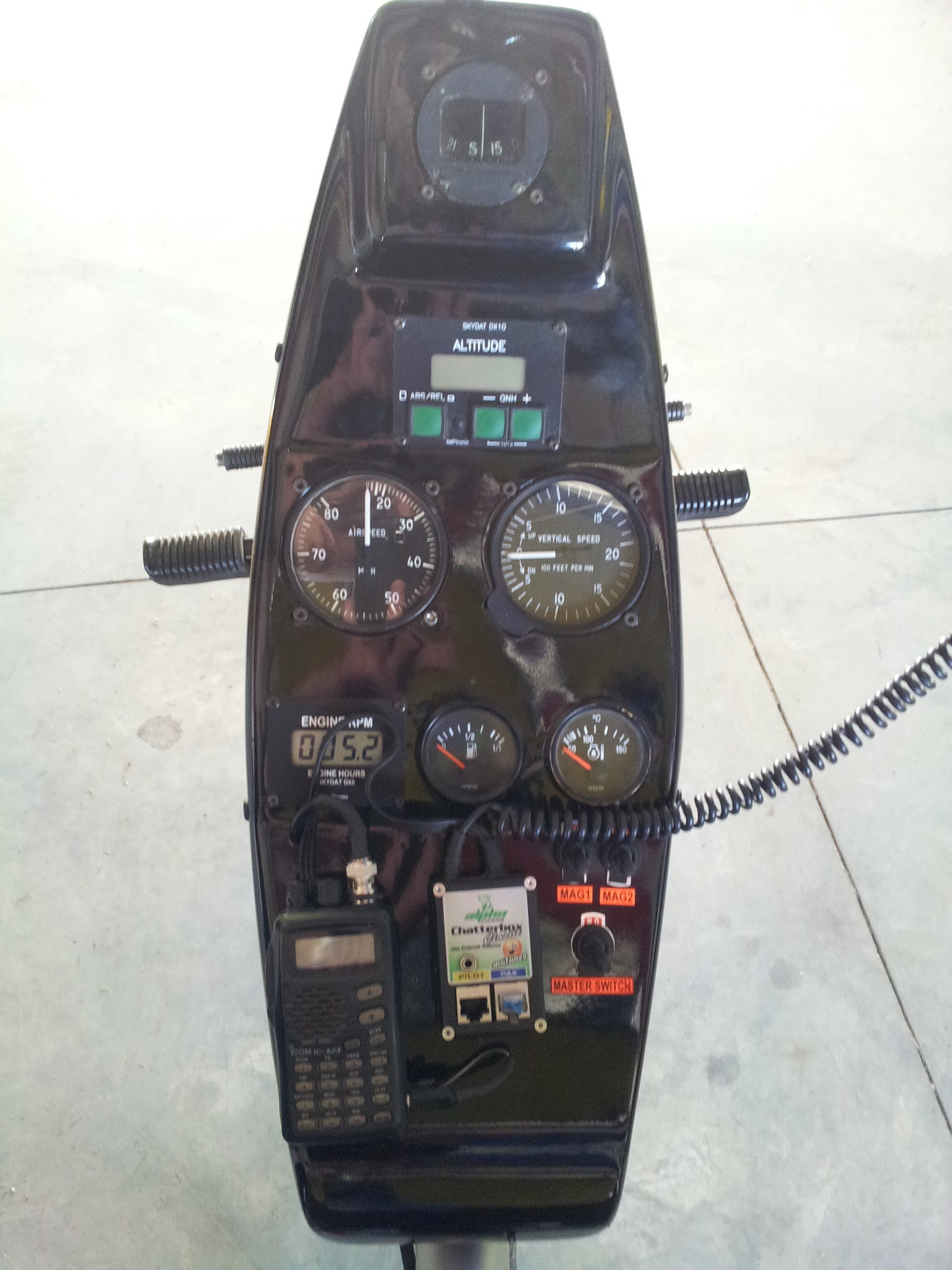I have always dreamed of flying and was fortunate enough to be able to complete my recreational pilot license a few years ago. South Africa is an amazing country to explore by air, especially in an open cockpit of a Weight Shift Controlled (WSC) trike!

My wife took the picture below as we were flying along the Wild Coast. The pilot sits in front, with the passenger in the rear seat.

The instrument pod is located between the pilots legs.

- Compass,
- Altimeter,
- Air Speed Indicator (ASI),
- Vertical Speed Indicator (VSI),
- Engine RPM and Hour Meter,
- Fuel Level,
- Water Temperature,
- Radio,
- Intercom,
- Magneto Switches, and
- Master Switch.
The analog dials look nice and make a neat cockpit, but lack in functionality for cross country navigation. Also, the ASI was under-reading, the compass needed calibration and the Engine RPM Meter occasionally showed zeros. Time for an upgrade!
As hackers and engineers we are quick to think of all the potential features we can add with a few sensors, a micro-controller and an LCD screen. It wasn't long before I built the first prototype...
I installed a 128 x 64 graphic LCD module between the radio and the switches, integrating the intercom box into the pod and added the headset connectors to the bottom of the pod. My phone in the flight suit window pocket runs the Air Navigation Pro app, which gives me a moving map with all the airspaces. A PIC microchip, GPS module, some MEMS sensors and a Rotary Encoder added a few additional flight instruments:
- Ground Speed
- True Heading
- True Altitude
- Altitude at standard pressure (Flight Level)
- Date and Time
- Flight Time
- Pilot Checklist / Notes
- Battery Voltage
- Outside Air Temperature
- Headlight Control
- Heat-pad Temperature Control
- Engine RPM Meter
- Fuel Level
- Water Temperature
- USB Charging Port
So far so good... the only issue: feature creep!
This first prototype was hacked together on veroboard with parts I had lying around. With all the menus and functionality, the 24 KB program memory on the PIC18F4455 was quickly running out. Time for a proper design...
 Rene
Rene
Discussions
Become a Hackaday.io Member
Create an account to leave a comment. Already have an account? Log In.